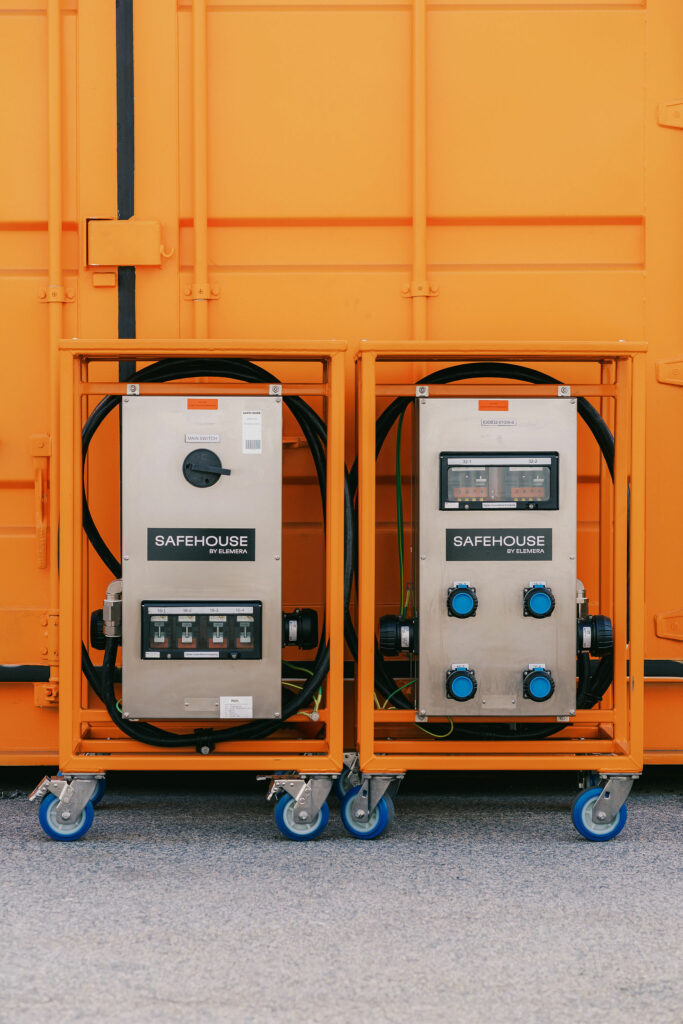What Does Roar Solutions Mean?
What Does Roar Solutions Mean?
Blog Article
Some Ideas on Roar Solutions You Should Know
Table of ContentsThe Of Roar SolutionsSome Known Details About Roar Solutions Not known Facts About Roar Solutions
In order to protect installations from a potential surge a method of analysing and classifying a possibly harmful location is required. The objective of this is to make certain the proper choice and installation of equipment to inevitably prevent an explosion and to make sure safety of life.
(http://peterjackson.mee.nu/do_you_ever_have_a_dream#c2270)
No devices should be installed where the surface temperature level of the devices is better than the ignition temperature of the provided danger. Below are some typical dust dangerous and their minimal ignition temperature. Coal Dirt 380C 225C Polythene 420C (thaws) Methyl Cellulose 420C 320C Starch 460C 435C Flour 490C 340C Sugar 490C 460C Grain Dust 510C 300C Phenolic Material 530C > 450C Aluminium 590C > 450C PVC 700C > 450C Residue 810C 570C The possibility of the hazard existing in a concentration high adequate to trigger an ignition will differ from location to place.
In order to categorize this risk an installment is split right into areas of threat depending upon the quantity of time the unsafe is present. These locations are referred to as Zones. For gases and vapours and dirts and fibres there are 3 zones. Area 0 Area 20 A harmful ambience is highly most likely to be present and may exist for extended periods of time (> 1000 hours each year) and even constantly Zone 1 Area 21 A hazardous environment is feasible however unlikely to be present for long durations of time (> 10 450 C [842 F] A classification of T6 suggests the minimum ignition temperature level is > 85 C [185 F] Hazardous area electrical tools perhaps developed for usage in greater ambient temperatures. This would indicated on the score plate e.g. EExe II C T3 Ta + 60C( This means at 60C ambient T3 will certainly not be exceeded) T1 T1, T2, T3, T4, T5, T6 T2 T2, T3, T4, T5, T6 T3 T3, T4, T5, T6 T4 T4, T5, T6 T5 T5, T6 T6 T6 A T Course ranking of T1 means the optimum surface area temperature generated by the instrument at 40 C is 450 C. Thinking the linked T Course and Temperature rating for the tools are proper for the area, you can always utilize a tool with an extra rigid Department score than needed for the area. There isn't a clear solution to this question. It actually does depend on the sort of tools and what fixings require to be brought out. Equipment with specific test procedures that can not be performed in the area in order to achieve/maintain 3rd party score. Must return to the factory if it is before the tools's service. Field Repair By Authorised Personnel: Challenging screening might not be required however specific treatments might require to be adhered to in order for the tools to preserve its 3rd party rating. Authorised employees have to be used to perform the work correctly Repair work must be a like for like replacement. New component have to be taken into consideration as a direct replacement needing no unique testing of the devices after the fixing is full. Each item of tools with a dangerous ranking ought to be examined separately. These are outlined at a high degree below, however, for even more comprehensive details, please refer straight to the guidelines.
The Ultimate Guide To Roar Solutions
The devices register is a comprehensive database of devices records that includes a minimum set of fields to determine each product's place, technological parameters, Ex lover category, age, and environmental data. This information is essential for tracking and taking care of the equipment successfully within harmful locations. In comparison, for periodic or RBI sampling examinations, the quality will certainly be a combination of Thorough and Close inspections. The ratio of Comprehensive to Close evaluations will be identified by the Devices Risk, which is assessed based on ignition danger (the likelihood of a resource of ignition versus the probability of a flammable environment )and the unsafe area classification
( Zone 0, 1, or 2). This variation will also affect the resourcing requirements for work preparation. When Great deals are specified, you can establish tasting strategies based on the example dimension of each Whole lot, which refers to the number of random devices products to be evaluated. To establish the called for example dimension, two elements need to be assessed: the size of the Lot and the group of assessment, which suggests the level of effort that need to be applied( decreased, typical, or enhanced )to the evaluation of the Whole lot. By integrating the category of examination with the Lot dimension, you can after that establish the appropriate being rejected criteria for a sample, implying the allowed number of damaged items located within that example. For even more information on this process, please describe the Power Institute Guidelines. The IEC 60079 standard recommends that the optimum interval between examinations need to not exceed 3 years. EEHA assessments will likewise be conducted beyond RBI campaigns as component of scheduled upkeep Get More Information and devices overhauls or repairs. These inspections can be credited towards the RBI sample dimensions within the impacted Whole lots. EEHA inspections are conducted to determine mistakes in electrical devices. A heavy scoring system is essential, as a solitary piece of devices might have numerous faults, each with differing levels of ignition threat. If the combined score of both inspections is less than two times the mistake rating, the Great deal is deemed acceptable. If the Great deal is still thought about unacceptable, it has to undergo a complete evaluation or reason, which may cause stricter assessment protocols. Accepted Great deal: The sources of any type of mistakes are identified. If a common failure setting is found, additional equipment may call for examination and fixing. Mistakes are identified by extent( Safety and security, Honesty, House cleaning ), making certain that urgent problems are examined and attended to quickly to reduce any type of impact on safety or operations. The EEHA data source ought to track and record the lifecycle of faults in addition to the corrective activities taken. Applying a robust Risk-Based Evaluation( RBI )method is crucial for ensuring conformity and safety in handling Electrical Devices in Hazardous Areas( EEHA) (electrical refresher course). Automated Mistake Scoring and Lifecycle Monitoring: Easily take care of faults and track their lifecycle to enhance examination precision. The intro of this assistance for risk-based assessment additionally strengthens Inspectivity's position as a best-in-class solution for regulative compliance, as well as for any type of asset-centric evaluation use instance. If you have an interest in finding out more, we welcome you to ask for a demonstration and discover exactly how our option can transform your EEHA monitoring processes.
How Roar Solutions can Save You Time, Stress, and Money.

In regards to eruptive risk, a dangerous location is an environment in which an eruptive atmosphere exists (or might be anticipated to be existing) in quantities that need special precautions for the building, setup and use of equipment. eeha courses. In this post we discover the difficulties dealt with in the work environment, the danger control actions, and the needed competencies to function safely
It issues of contemporary life that we make, store or handle an array of gases or fluids that are considered combustible, and a variety of dirts that are regarded combustible. These materials can, in particular problems, create eruptive ambiences and these can have major and tragic repercussions. The majority of us know with the fire triangle remove any among the 3 elements and the fire can not occur, however what does this mean in the context of harmful locations? When damaging this down right into its most basic terms it is essentially: a mix of a certain quantity of launch or leakage of a certain compound or product, combining with ambient oxygen, and the existence of a resource of ignition.
In the majority of instances, we can do little about the levels of oxygen airborne, but we can have considerable influence on resources of ignition, as an example electric devices. Hazardous locations are recorded on the dangerous area classification drawing and are recognized on-site by the triangular "EX-SPOUSE" indication. Below, among other essential info, zones are split right into 3 types depending on the danger, the possibility and duration that an eruptive atmosphere will certainly exist; Area 0 or 20 is deemed the most hazardous and Zone 2 or 22 is deemed the least.
Report this page